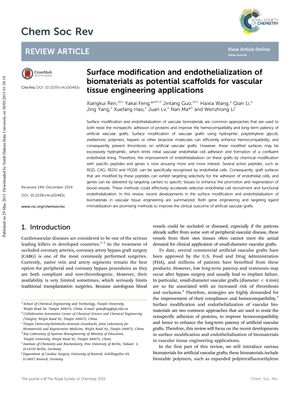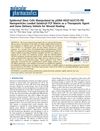Surface Modification and Endothelialization of Biomaterials as Potential Scaffolds for Vascular Tissue Engineering Applications
January 2015
in “
Chemical Society Reviews
”
biomaterials endothelialization vascular tissue engineering hemocompatibility vascular grafts ePTFE PET PU hydrophilic polymers zwitterionic polymers heparin bioactive molecules gene delivery electrospinning electrospraying scaffolds cell migration tissue regeneration nitric oxide thrombosis non-thrombogenic surfaces expanded polytetrafluoroethylene polyethylene terephthalate polyurethane

TLDR Improving artificial vascular grafts requires better materials and surface designs to reduce blood clotting and support blood vessel cell growth.
The 2015 document reviewed advancements in vascular tissue engineering, focusing on the modification of biomaterial surfaces to enhance hemocompatibility and promote endothelialization, which is crucial for the functionality of vascular grafts. It discussed the limitations of existing materials like ePTFE, PET, and PU, and the use of hydrophilic and zwitterionic polymers, heparin, bioactive molecules, and gene delivery methods to improve biocompatibility. Techniques such as electrospinning and electrospraying were recommended for creating scaffolds with larger pores to aid cell migration and tissue regeneration. The document also highlighted the potential of integrating heparin and nitric oxide into scaffolds to reduce thrombosis risk. It concluded that despite progress, developing completely non-thrombogenic surfaces remains a challenge, and optimizing the physical, chemical, and biological properties of grafts is essential for the success of artificial vascular grafts.





